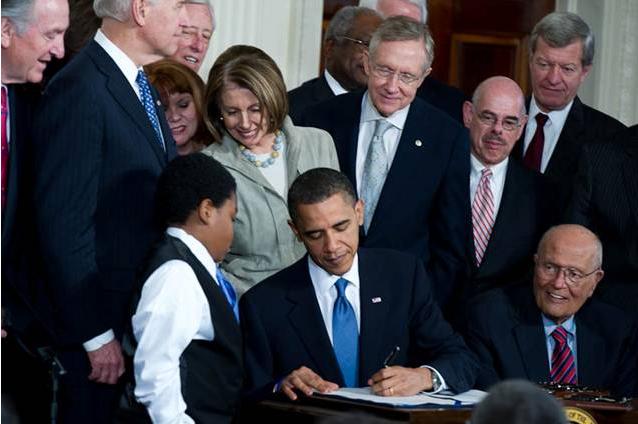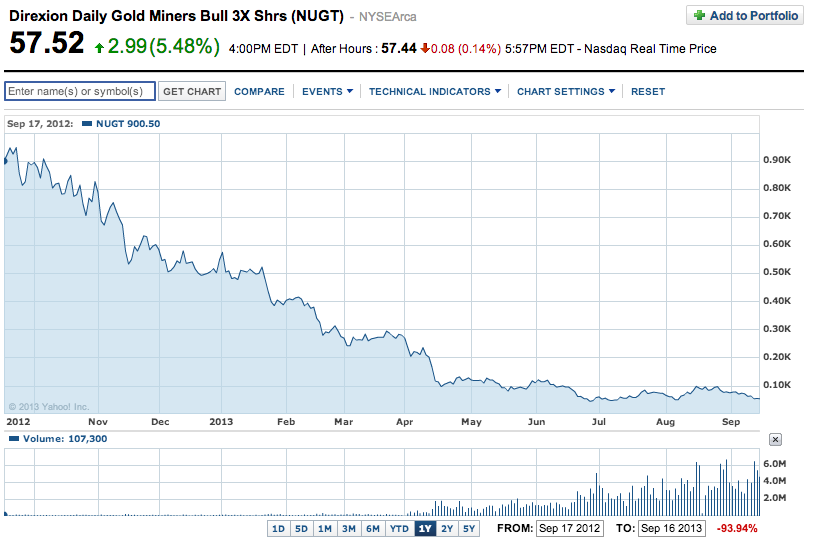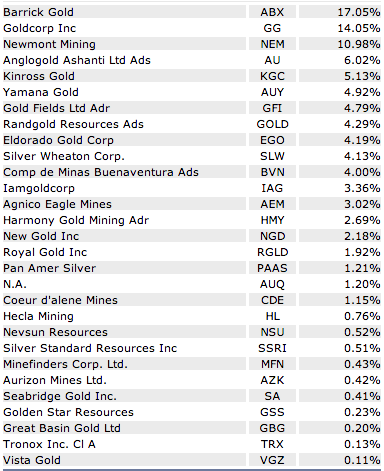Allow us the indulgence of quoting ourselves, since there are so few other personal finance bloggers worth repeating the words of. The man in this story sued Target because the store claimed that the $150 worth of luggage they sold him was discounted from $300, when in fact it was discounted from some smaller amount. In California, that gives you standing:
“How much did that cost?”
“I got it on sale!”That’s not an answer. Things cost what they cost, not the reduction by which they were discounted.
Stating a discount is the least nuanced trick in the book, but it works. That’s why it’s lasted so long. It’s the equivalent of pretending to throw a ball while your dog turns around and chases nothing, except dogs don’t know any better and humans are supposed to be the masters of this dopey planet. Which of these 2 signs do you think will entice more customers?
The one on the left will, because people are incorrigibly stupid.
Years ago, “I got it on sale” might even have been an acceptable defense, only because there was no universal standard, no platinum-iridium bar of comparison. This Curtis Mathis TV costs $1500, and the salesman at my friendly neighborhood Gottschalk’s store says that’s a $500 saving? Sounds good to me, I guess. What do I know?
People, it’s, as our grandmothers enjoy calling it, the Internet Age. You’re no longer at the mercy of an opportunistic merchant or a prevaricating advertising department to find out whether you’re indeed paying too much for your set of lawn chairs or set of lawn darts. Here’s a quote from some woman with a ridiculous job title (“retail strategist”) that makes us yearn for the day when almost everyone was employed in agriculture:
Okay, that served the purpose of giving the USA Today writer a source for future use. But what does it mean? Taken on its face, it means “deals” and “sales” are irrelevant. But do you know what metric does matter when you’re trying to determine the price of something? Here, we’ll give you a hint. Put your PRedICtivE powers to use and try and glean what it might be.
Price, and price only. Once again, layers of sophistry administered over the years have turned a simple truth into something complicated that needs to be unearthed, rinsed off and decoded. Even then, plenty of people still won’t get it.
So how do you determine the appropriate price of something, if you can’t rely on retailers’ capricious figures? EBay. The auction site is more than just a place to get rid of your miscellany. It’s a valuable tool in its capacity as the definitive price list for just about anything.
Here’s Cuddles My Giggly Monkey, a toy that indulging parents are giving their kids this Christmas:
It costs $85 at Hasbro’s own site. It’s unavailable on FAO Schwarz. $65 on Toys “Я” Us’s site. $75 on Target’s site, but good luck getting one by December 24. Those prices give some indication of how much you should pay, but not enough of one. There’s still the matter of availability. The Target price sounds tempting, but the toy appears to be out of stock at every location we could find.
Onto eBay. We didn’t think this required direction, but here goes. Once you’ve entered the name of what you want to buy,
- Look at the Buy It Now prices only.
- Look at the auction prices, ranked by time ending soonest.
- Ignore the ones without any bids.
- Buy accordingly.
As of now, eBay has 102 Cuddleses for sale, 90 of them available for immediate purchase. Among those, the best price we could find was $85, including shipping.
There are 2 dozen Cuddleses available via auction, so the total isn’t 102, but hey, it’s eBay. They used to have a female CEO, so math isn’t their strong suit. Of the dolls available via auction, the one ending soonest (11 hours as of now) has 7 bids, the last of those $61.
It’s important to mention that most of the remaining dolls available for auction haven’t been bid on yet. That means you should ignore their listed prices. Why? Because those “prices” aren’t prices at all. They’re just dreams held by the sellers. It’s like when the media reports that tickets to the Democratic National Convention or gold iPhone 5Ss are going for $20,000 or whatever, just because one deluded seller on eBay insisted that bids start at that wildly inflated and unrealistic price. No one’s going to buy a late-model Xbox for $20,000, and no one’s going to buy Cuddles My Giggly Monkey for $125. No matter how badly the eBay seller who wants that much kicks and yells.
As the end of the auction approaches, the bids increase and the prices increase asymptotically. A lot can happen to that $61 high bid in the remaining 11 hours, and we’d be willing to bet that the high bid will surpass $65 long before then.
So buy from Toys “Я” Us and be confident you made the right decision. Should someone else offer the same toy for $70 and bill it as “30% off!”, you’ll know what to do and how disdainfully to treat that “deal.”
Thanks to Paula Pant at Afford Anything for indirectly inspiring this post. Unlike us, she hasn’t yet run out of ideas, nor resorted to modifying other people’s.









